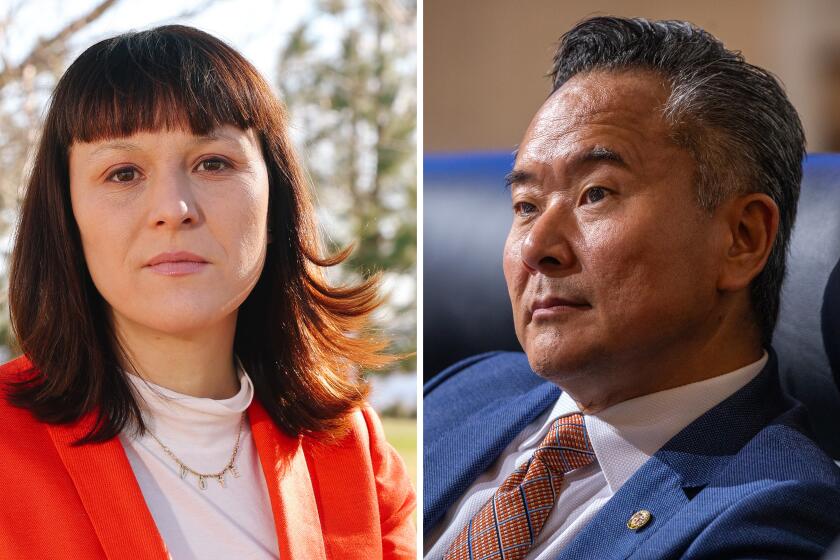Homelessness in the northwestern Valley becomes a pressing issue in council race
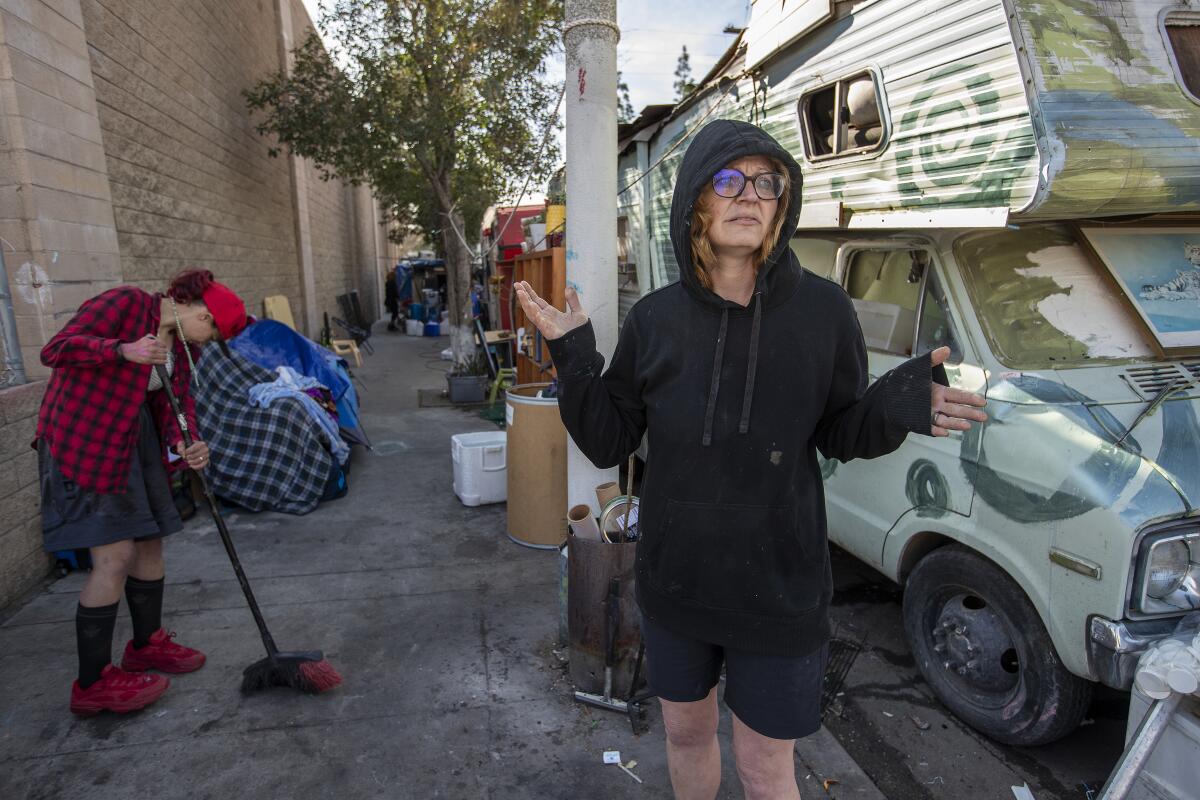
Homelessness in the northwestern San Fernando Valley has jumped in recent years.
In Chatsworth, a sprawling encampment at the Metrolink station gained attention in May after a giant “Chatsworth Skid Row” sign rose at the site. Meanwhile, in that neighborhood and Granada Hills, business owners are grappling with tents and RVs outside their stores and offices.
Police crackdowns have intensified. Police have been enforcing a revised city law targeting sidewalk access in Council District 12 in the northwest Valley significantly more than they have in other neighborhoods, according to a Times analysis of data from City Controller Kenneth Mejia that looked at a two-year period starting in late 2021.
Now, the March 5 election for a Los Angeles City Council seat could decide which direction the northwest Valley takes on homelessness.
Serena Oberstein, a Northridge resident and nonprofit leader, is challenging incumbent John Lee in a campaign that promises a new approach.
Will Los Angeles City Council District 12 voters keep incumbent John Lee or usher in challenger Serena Oberstein to represent the northwest San Fernando Valley?
She criticizes Lee for his reliance on Municipal Code 41.18 — the city’s anti-camping law — which she calls a “Band-Aid solution.”
“We’re moving people from sidewalk to sidewalk and not solving the problem,” said Oberstein, adding that she would bring to the district more resources for mental health issues and substance abuse, shelter beds and housing.
First elected in a special election in 2019 and again in 2020, Lee is seeking another four-year term in District 12, which includes West Hills, Granada Hills, Chatsworth, Porter Ranch and Northridge.
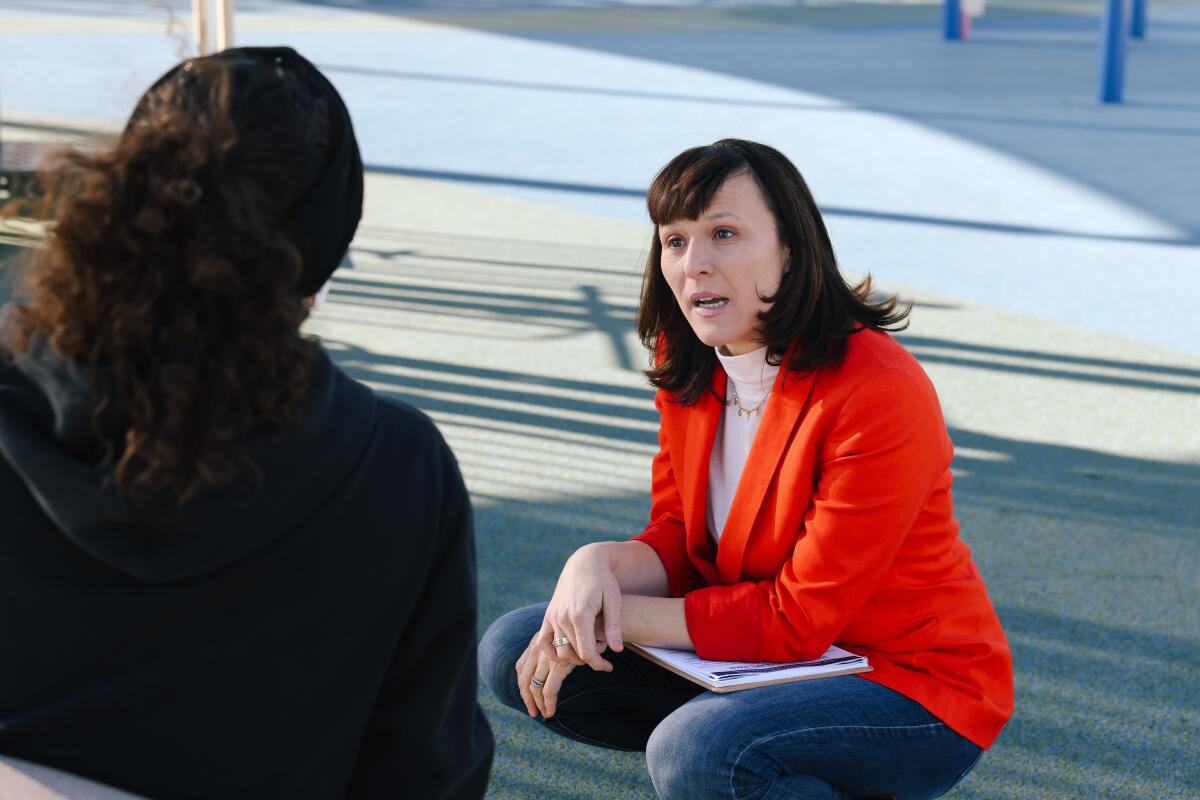
Lee, a Porter Ranch resident, says there were no city-backed beds for homeless residents in his district when he was elected. Today, there are 200, with an additional 170 or so coming this year, according to his office.
He has made a promise to pair aggressive enforcement of the 41.18 law with support for homeless services, he said.
“Housing solutions are often controversial,” Lee said, “but I have shown that I will make tough decisions and work to find common ground.”
City data show that Lee has designated dozens of areas in his district as 41.18 zones — around shelters, parks, freeways and elsewhere — allowing police to regulate where people can sit, sleep and store property.
In some previous council races in other districts, candidates have vowed to repeal 41.18 zones if elected.
Oberstein, when asked about her plans, said she would assess the 41.18 zone information when in office. She said the answer isn’t “more or less 41.18 zones — it’s more affordable housing.”
More than 1,000 people were recorded as homeless in District 12 in 2022, a 43% rise from 2020, the first count after Lee took office. (The Los Angeles Homeless Services Authority didn’t released public district-by-district numbers for 2023.)
India Barr, 38, swept the street near her Sportsman van on a recent morning in a commercial area of Chatsworth. She said the police are a regular presence in the area but leave her alone. An artist and musician, Barr said she can make $12 a day recycling bottles and other objects.
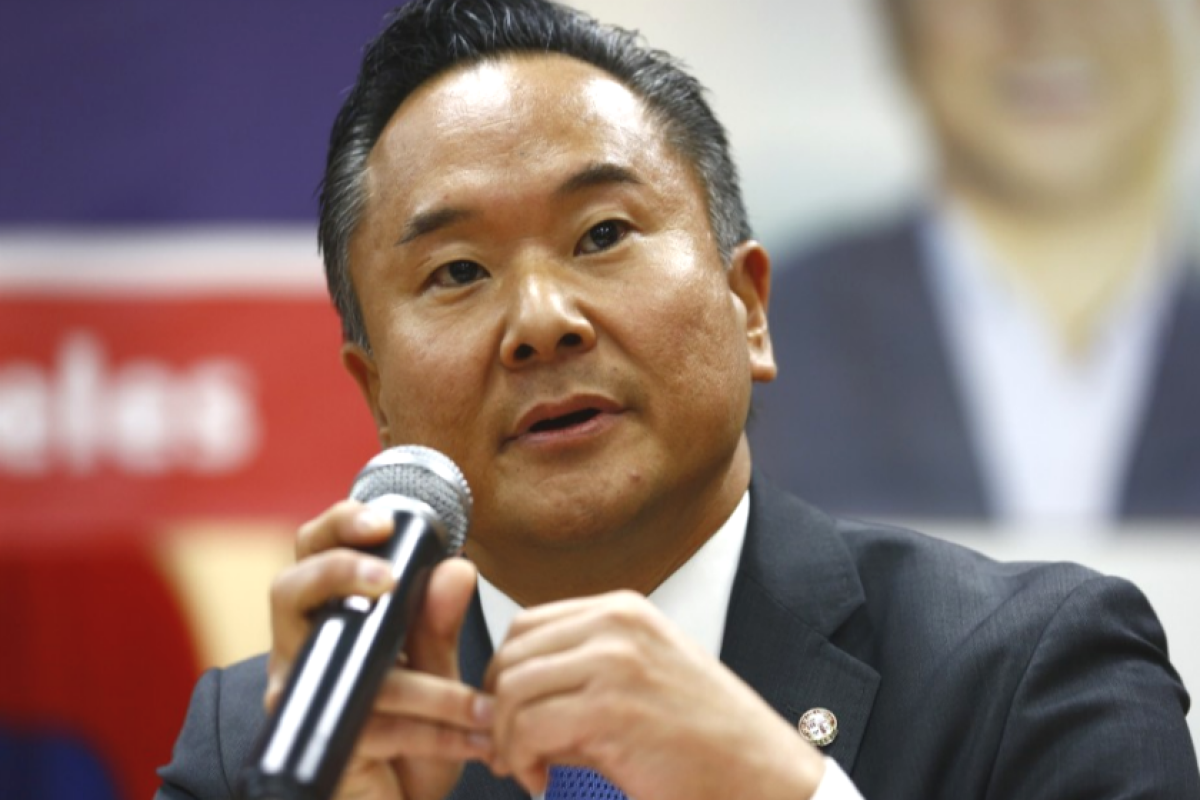
Barr said she became homeless several years ago after a “bad divorce.” She doesn’t want to go to a shelter and would like to move into a rental unit.
“Everyone has a period in life where they’re not as up as they used to be,” she said. “We just need a leg up.”
Historically, District 12 didn’t invest in services because of a lack of political will and community resistance, housing experts told The Times.
Proposition HHH, the $1.2-billion bond measure to build housing for homeless people and low-income families, was passed citywide in 2016. Voting data show that District 12 voters rejected the measure, according to Tommy Newman, vice president of public affairs at United Way of Greater L.A., which led the HHH campaign.
Still, Newman said, there has been a “significant increase” in homeless services under Lee.
Rowan Vansleve, president of Hope the Mission, a homeless services provider, said he was initially skeptical of Lee because past District 12 council members hadn’t shown much interest in the issue. But during construction of the Trebek Center, a Northridge shelter housed in a former roller skating rink, Lee visited multiple times. Once, he brought opponents, some of whom were visibly angry about the site, Vansleve said.
“He stood between us and the residents and said, ‘I promise you that it’s going to be done right,’ ” said Vansleve, whose organization runs the shelter.
Vansleve described Lee’s office as “extremely responsive,” saying the councilman texts him during council meetings to ask what Hope the Mission needs.
“I feel like he listens to people, even though [his] answer isn’t always what people want to hear,” said Paula Cracium, director of community engagement at Shepherd Church in Porter Ranch, who worked with Lee during the COVID-19 pandemic to bring sandwiches to homeless people.
Lee, responding to questions from The Times, said he has made use of various motel programs, including one run by Mayor Karen Bass, to bring people indoors. He also worked with Bass’ office to clear the Chatsworth Metrolink site.
(Bass hasn’t endorsed either candidate in the City Council race.)
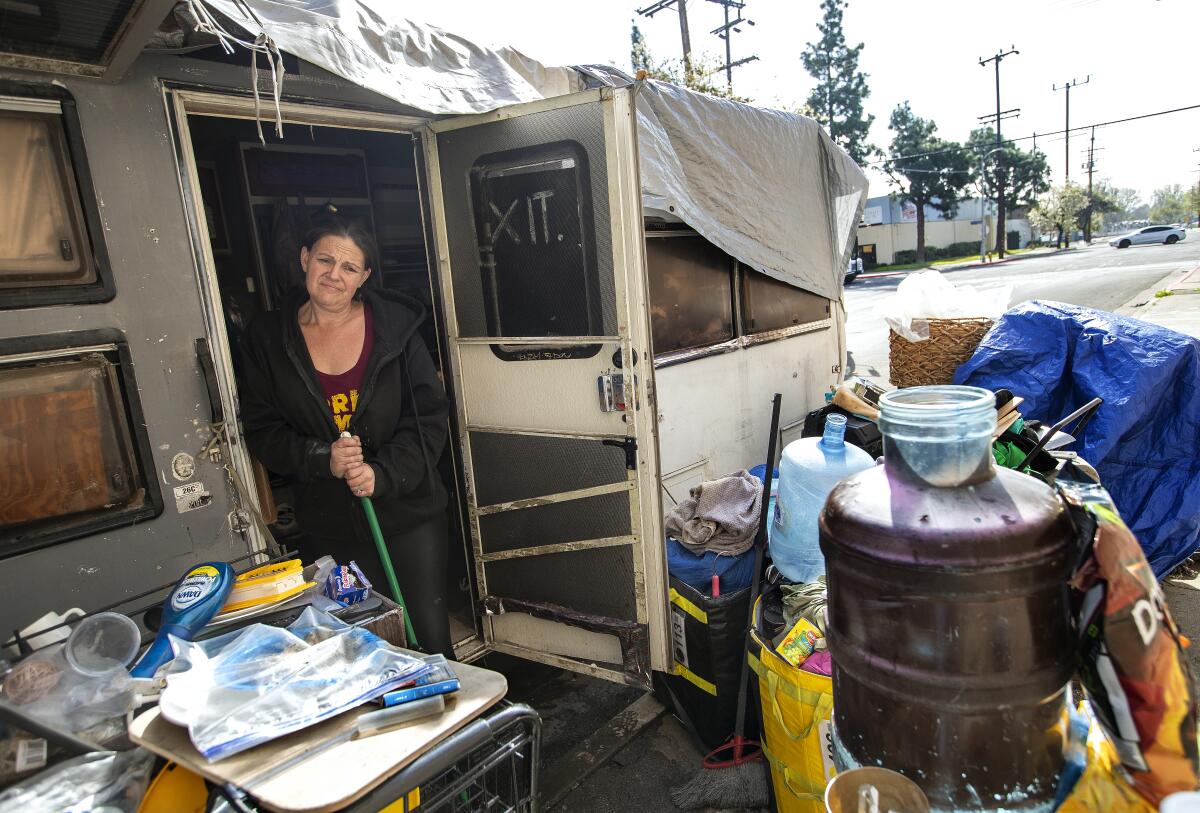
Asked how he approaches homelessness services in a district where voters may resist such projects, Lee said residents want “their money actually going toward efforts that reduce encampments on our streets in a tangible way. I share the same view.”
Opposition to Lee galvanized in 2021, when he sought to block an HHH-funded affordable housing project in Chatsworth over its size and location near an elementary school. He later backed the site, and the episode frustrated community members.
Some say they’ve unsuccessfully lobbied Lee to add a “tiny home” village and other services to the district.
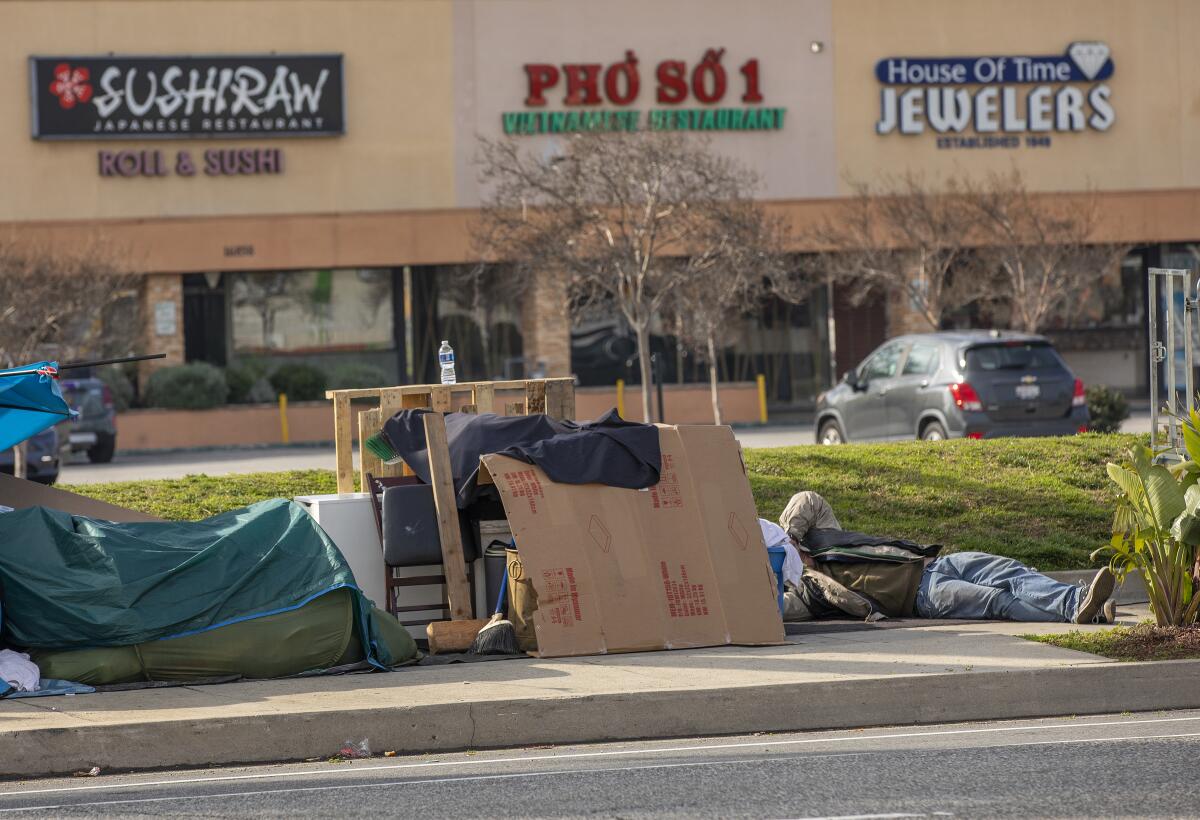
Assemblymember Pilar Schiavo (D-Chatsworth), a former board member of West Valley Homes Yes, a group that advocates for homelessness services, accused Lee of failing to “proactively” go out and “look for properties and find solutions.”
Schiavo has endorsed Oberstein. Mike Benedetto, a member of the Granada Hills South Chamber of Commerce who said he wants more shelter beds in the district, is also voting for Oberstein.
Benedetto led The Times to an encampment along Devonshire Street in Granada Hills, near a commercial stretch. Residents said city cleaning crews come weekly. Some described drug use at the site and visits by gang members.
“We need permanent solutions,” Benedetto said, looking at the rows of tents. “It’s a waste of taxpayer money just to move people around.”
Get the lowdown on L.A. politics
Sign up for our L.A. City Hall newsletter to get weekly insights, scoops and analysis.
You may occasionally receive promotional content from the Los Angeles Times.
Lee, in response to questions from The Times, said he didn’t think one of the tiny home sites pitched by proponents was feasible but remains open to the concept. His office is in “constant contact” with West Valley Homes Yes, he said, noting that “the reality is that sometimes partnerships take time to develop.”
Stephanie Klasky-Gamer, chief executive of service provider L.A. Family Housing, said there’s more work being done on homelessness in the district than in previous years.
Lee came into office “pretty hot against what is happening,” Klasky-Gamer said. “He has tempered that.”
Oberstein’s campaign is hoping voters will be swayed by the number of people on the street.
“Under the incumbent, we’ve seen the homelessness crisis grow,” she said.
Times staff writer Doug Smith contributed to this report.
More to Read
Sign up for Essential California
The most important California stories and recommendations in your inbox every morning.
You may occasionally receive promotional content from the Los Angeles Times.
